Thứ Năm, 22 tháng 5, 2014
Thứ Năm, 1 tháng 5, 2014
30 Types of Navigation Equipment and Resources Used Onboard Modern Ships
Gone are the days when a ship navigation officer had to take help of unconventional ways to plan and navigate a voyage at sea. Today, a ship officer has myriad of marine navigation equipment which makes his life a lot simpler, thanks to the advancement in technology. Moreover, present day seafarers are trained so as to know the functioning and operation of all modern day navigational equipment that have made the journey at sea smoother and safer.
With modern day facilities and automation, a ship today has several advanced navigation equipment systems which give accurate data for the voyage.
Herein, we have enlisted 30 types of navigational equipment, both old and new, which are present on all merchant ships.
1. Gyro Compass: It is used for finding the right direction. Unlike magnetic compass, gyro compass is not hampered by external magnetic field. It is used to find correct North Position, which is also the earth’s rotational axis. Its repeater system must be present in the steering platform for emergency steering. Read more here
2. Radar: It is used to determine the distance of the ship from land, other ships, or any floating object out at sea. Read more here
3. Magnetic Compass: The magnetic compass work in conjunction with the magnetic field of the earth. It is used to get planned direction for the voyage.
4. Auto Pilot: It is a combination of hydraulic, mechanical, and electrical system and is used to control the ship’s steering system from a remote location (Navigation bridge).
5. ARPA: Automatic Radar Plotting Aid displays the position of a ship and other vessels nearby. The radar displays the position of the ships in the vicinity and selects the course for the vessel by avoiding any kind of collision.
6. Automatic Tracking Aid: Just like ARPA, automatic tracking aid displays the information on tracked targets in graphic and numeric to generate a planned layout for a safer and collision free course.
7. Speed & Distance Log Device: The device is used to measure the speed and the distance traveled by a ship from a set point. By calculating the same, ETA of the ship is adjusted or given to the port authority and agent.
8. Echo Sounder: This instrument is used to measure the depth of the water below the ship’s bottom using sound waves.
9. Electronic Chart Display Information System: Read more about ECDIS here.
10. Automatic Identification system: Read more about AIS here.
11. LRIT: Read more about LRIT here.
12. Rudder Angle Indicator: Rudder angle indicator, as the name indicates, provide the angle of the rudder. The display is provided on bridge to control the rate of turn and rudder angle of the ship.
13. Voyage Data Recorder: Read more about VDR here.
14. Rate of turn indicator: It indicates how fast the ship is turning at steady rate, normally shown as number of degree turned.
15. GPS Receiver: A Global Positioning System (GPS) receiver is a display system used to show the ship’s location with the help of Global positioning satellite in the earth’s orbit.
16. Sound Reception System: This system is required for a ship with fully enclosed type bridge. It enables the navigating officer inside the cabin to listen to the sound signals and fog horn from other ships.
17. Navigational Lights: Read more here.
18. Ship Whistle: A ship’s horn is known as whistle and it is generally provided in duplicate. One is driven by air and the other is electrically operated.
19. Daylight Signaling Lamp: They are light signaling devices used for emergency signaling in the day time.
20. Pilot Card: It is an informative booklet provided to the ship’s pilot. It consists of the dimension, draught, turning circle, maneuvering, propulsion equipment etc. of the vessel for safe maneuvering.
21. Voyage Plan: A voyage Plan must be present onboard for referring past voyage plans or planning a future voyage.
22. Forecastle Bell: It is used to mark the presence of the ship in fog or bad weather and sound the alarm in case of any emergency.
23. Maneuvering Booklet: In this booklet the performance of the propulsion plant and the ship during maneuvering in different weathers and situations is recorded for quick reference.
24. Black Ball Shape: It is a day time signaling shape used to determine the characteristics of vessel with different arrangement of ball shapes. For e.g. a vessel at anchor will show a blackball at foremost end of the forecastle.
25. Record of Navigation Activities: All the navigational activities must be recorded and kept on board for ready reference. This is a mandatory and the most important log book.
26. Record of Maintenance of Navigational Equipment: Hard copy of the record must be present onboard ships for ready reference of port and regulatory authorities and must be signed by master and duty officers of the ship.
27. Wheelhouse Posters: Present in the Navigation bridge, it displays a detailed information of maneuvering characteristics of the ship.
28. Transmitting Heading Devise: They are used to display the information of the vessel’s true heading.
29. Black Diamond Shape: When the ship is being towed or when a vessel is unable to maneuvers on itself, a black diamond shape is shown during the day time.
30. Ship Flags: Various types of ship flags with different colors and signs are used to indicate a ship’s position. Signal flags are they are commonly known, have been used since the ancient times and are still used on all vessels.
This Used to be an Impossible Photograph
Photographer Sergey Dolya had the unique opportunity last month to ride a Russian nuclear-powered icebreaker to the North Pole. During his voyage, he captured some incredible images with the help of his professional-level Nikon D3X digital SLR camera and a Nikon FX 12-24mm F/2.8G lens.
The following image, taken by Dolya on October 21, 2013, is spectacular for obvious reasons, but what is not so obvious is that this image would have been impossible to take just a few years ago.
With very little light, Dolya had limited options to capture a sharp and properly-exposed image such as this.
Firstly, the shutter speed needed to be fast enough in order for the camera to be held by hand while shooting from a helicopter. This image was taken at a 15mm focal length while using a 1/100th of a second shutter speed. At that focal length, 1/100 of a second is fast enough for most people to capture a sharp image by hand.
Secondly, Dolya took advantage of his low focal length lens and and shot this image wide open. That is, he took this image at the lowest F-stop available in order to let as much light in as possible, in this case F/2.8.
F/2.8 at 1/100 is not a problem for many cameras, but the third, and most important factor is the ISO level. Dolya shot at ISO 2800, which essentially means that the light sensitivity of digital sensor within the camera was greatly increased in order to absorb as much light as possible within the 1/100th second that the shutter was opened.
In the past, an increase in ISO level meant grainy and noisy images, however a few years ago, companies like Nikon and Canon broke the code so-to-speak on how to eliminate these issues and enable photographers like Dolya to take beautiful images like this one.
8 Important Points For Efficiently Taking Over a Bridge Navigational Watch
1. Ship’s Position – Speed – Course
The most important factor or the first thing to be checked after coming upon the bridge is the position and speed of the ship. Once you are satisfied with the position of the ship on the chart, it is a good practice to browse through the chart and the course to be followed till the end of your watch. Check for waypoints of course alterations, any reporting points, traffic separation schemes, shallow patches, or any dangers to navigation along the intended track marked on the chart.
Compare the course on the chart with the course in the passage plan.
Make yourself aware of the Engine RPM, Speed, Log speed, Course made good, Course steered. Any doubt or uncertainties are to be checked with the OOW.
2. Traffic Density
Now that you are satisfied with the position and course of the ship, without wasting time look outside the bridge to get a clear view of the horizon and check the number of vessels around. It is advised to take a walk all the way to both the bridge wings to get a view of the stern of the ship, as it is likely to be omitted. Once you have visually ascertained the situation outside, glance at the Radar screen for the targets around and for more information provided by the Automatic Radar Plotting Aids (ARPA). It is recommended to switch to higher range scales for early detection of the aspect of vessels coming down (if any).
If your ship is already in a situation such as overtaking, close-quarter, or a crossing situation, DO NOTtake over the watch until the situation is over and the vessel is past and quite clear.
3. Weather Conditions and Night Vision
The next important factor to check is the weather condition. Make sure you are aware of a) Wind speed and direction and b) the set and drift of current, as these play an important role in the charting a good course. With the available information, try to foresee if restricted visibility or precipitation is expected during your watch.
During hours of darkness/restricted visibility, it is of utmost importance to be fully adjusted to the low lights, as it helps in the purpose of an effective look-out. Keep in mind that, it takes around 15 minutes for the eyes of an average person to get adjusted to low lights from artificial lights. Also ensure that complete darkness is maintained on the bridge during night watches.
4. Bridge Equipment and Dimmers
Ensure all bridge equipment are ready and intact. Any troubleshooting or exception is to be clarified with the OOW to be relived.
If needed, adjust and configure the required bridge equipment to your settings. It is found that different officers like to use the Radar with different orientation, CPA limits, alarm settings and displays which they are comfortable with.
Check the degrees of rate of turn set on the Auto-Pilot and make adjustments if necessary.
During hours of darkness, all bridge equipment and other displays should be dimmed to absolute minimum. Switch the display of equipment to night mode. This will help in effective look-out and prevent back scatter of lights.
5. Logbooks – Checklists – Daily orders
 Make it a habit to check the latest entry of the logbook while taking over the watch. All the necessary information found there should be noticed. Any misgiving entries should be clarified with the OOW in no time. Do not forget to note the gyro-error as well.
Make it a habit to check the latest entry of the logbook while taking over the watch. All the necessary information found there should be noticed. Any misgiving entries should be clarified with the OOW in no time. Do not forget to note the gyro-error as well.
It is also important to check and sign the ‘change of watch’ checklist. The same should be complied as well.
It is a common practice onboard to issue Master’s daily orders in addition to the existing Standing orders of the Master. Such daily orders will contain special guidelines and information about navigating the present leg of the voyage, and hence should be read with good care and the same should be signed and complied.
If prior to arrival or pilot boarding, confirm while taking over the watch, weather you are supposed to prepare the required checklists or pilot cards or give notices to engine room or deck crew.
6. Readiness of the Look-out/ Helmsman
It is a requirement to have an Able seaman for look-out duties as a part of the bridge team. He is also required to steer the ship in certain situations of emergencies, landfall, approaches to port or constrained waters.
In open seas or day light hours, the OOW could be the sole look-out of the watch. In such cases, ensure that the look-out/ helmsman is readily available on the walkie-talkie in case to call on any emergency situation. It is a good practice to radio-check his availability while taking over the watch.
7. Miscellaneous Activities on Deck or Engine room

image credits: http://www.seagoinghk.org/
If there is any out-of-ordinary jobs in progress or ready to commence on deck or engine room, such information has to be passed on to the OOW. It is also his responsibility to demand such information. The miscellaneous activities can be, but not limited to the following:-
a) Tank entry/ Inspection / Cleaning
b) Cargo Hold Entry
c) Bilge well entry/ routine alarm checks.
d) Fire watch/ Hot works / Welding on deck
e) Working aloft
f) Working on monkey island
g) Working on masts
h) Drills
8.Inform the Master if Required
The relieving officer has the authority to demand on any information regarding the navigation of the vessel and to elucidate on any uncertainty. If such uncertainties exists or there is lack of confidence about the situation from where you take over the watch, or that you are not satisfied with the hand-over,DO NOT take over the watch. You have the privilege to call the Master and wait until he is upon the bridge.
Even though the factors discussed above sounds like a long, time consuming process, it can be efficiently checked and done in 10-15 minutes of time. It is always a good habit to reach the bridge 10-15 minutes before your watch. Such acts not only reflect your officer-like-quality but also help the other OOW to get relieved on time.
The above points are some of the many important ones, which are helpful for a smooth and efficient takeover of a navigational bridge watch. While you’re busy doing the same, don’t forget to fill your cup with some hot coffee and positively wish yourself a good watch!
In Port

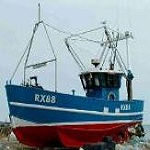
1. fishing boat /ˈfɪʃ.ɪŋ bəʊt/ - thuyền đánh cá
| 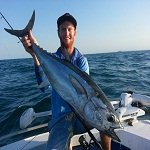
2. fisherman /ˈfɪʃ.ə.mən/ - người đánh cá
| 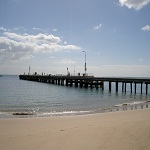
3. pier /pɪəʳ/ - bến tàu nhô ra ngoài
|
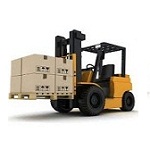
4. forklift truck /fɔːrklɪft ˈtrʌk/ - xe nâng hàng
| 
5. bow /baʊ/ - mũi tàu
| 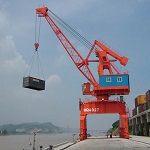
6. crane /kreɪn/ - cần trục
|
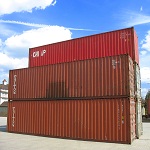
7. container /kənˈteɪ.nəʳ/ - thùng đựng hàng, côngtenơ
| 
8. hold /həʊld/ - khoang tàu
| %20ship.jpeg)
9. (container) ship /ʃɪp/ - tàu (côngtenơ)
|
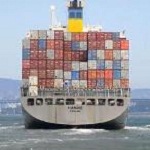
10. cargo /ˈkɑː.gəʊ/ - hàng hóa
| 
11. stern /stɜːn/ - đuôi tàu
| 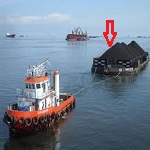
12. barge /bɑːdʒ/ - sà lan
|
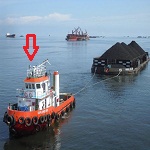
13. tugboat /tʌgbəʊt/ - tàu kéo
| 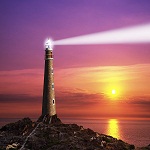
14. lighthouse /ˈlaɪt.haʊs/ - hải đăng
| 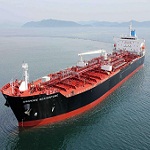
15. tanker /ˈtæŋ.kəʳ/ - tàu chở dầu
|
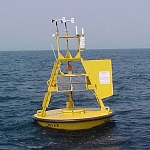
16. buoy /bɔɪ/ - phao
| 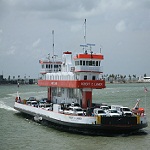
17. ferry /'ferɪ/ - phà
| 
18. smokestack /ˈsməʊk.stæk/ - ống khói
|
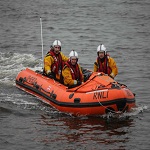
19. lifeboat /ˈlaɪf.bəʊt/ - xuồng cứu đắm
| 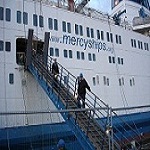
20. gangway /ˈgæŋ.weɪ/ - cầu tàu
| 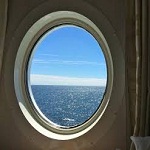
21. porthole /ˈpɔːt.həʊl/ - lỗ cửa sổ ở thành tàu
|
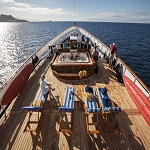
22. deck /dek/ - boong tàu
| 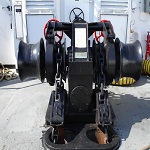 
23. windlass /ˈwɪnd.ləs/ - tời
| 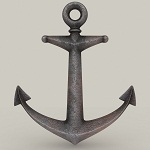
24. anchor /ˈæŋ.kəʳ/ - mỏ neo
|
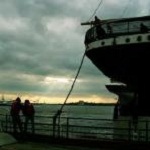
25. line /laɪn/ - dây
| 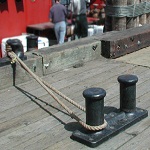
26. bollard /ˈbɒl.ɑːd/ - cọc buộc tàu
| 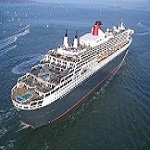
27. ocean liner /ˈəʊ.ʃən ˈlaɪ.nəʳ/ - tàu biển chở khách
|

28. dock /dɒk/ - bến tàu
| 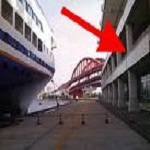
29. terminal /ˈtɜː.mɪ.nəl/ - nhà ga, khu vực hành khách
|
Đăng ký:
Nhận xét (Atom)



.jpg)











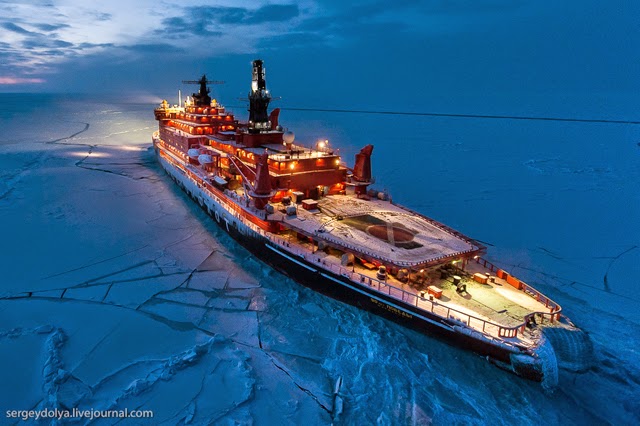

.jpg)
